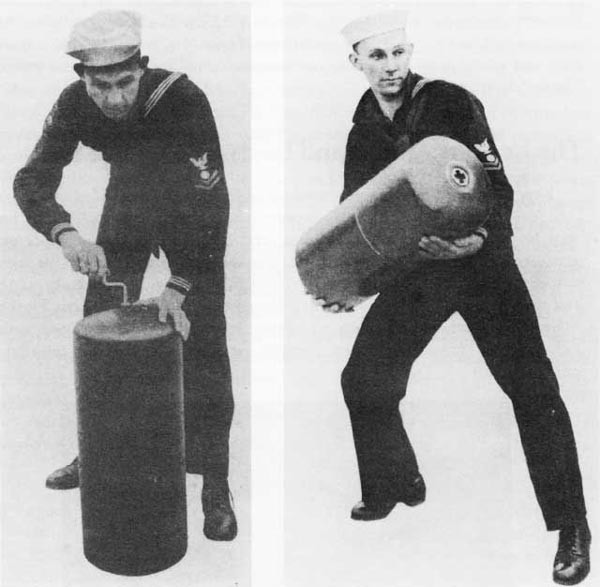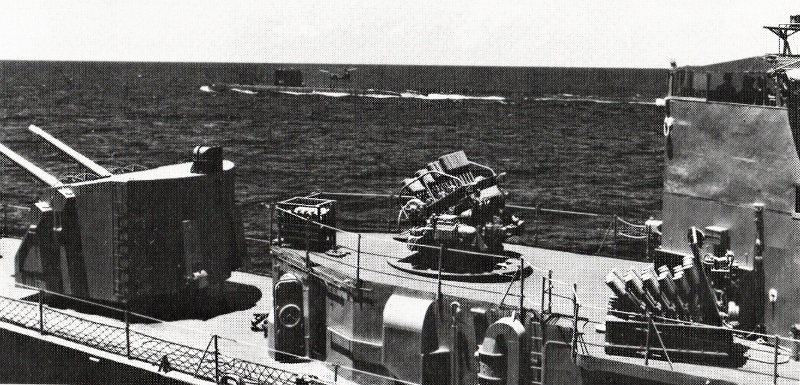There are two major classes of ASW projectiles; proximity and contact weapons. The former, such as the depth charge, must be large enough to damage a submarine even at a great distance. The nuclear depth charge - such as used on ASROC and SUBROC - achieves the greatest kill radius, but has obvious political consequences. Contact weapons, such as Hedgehog and Squid, can be much smaller, but must be either guided into their targets or else used in very large numbers in order to obtain a kill. A homing torpedo is an intermediate case, since - in theory - its effective homing volume may be comparable to even a nuclear depth charge.
Depth charges were first developed by the British Royal Navy in 1916. In February 1917 the USN Bureau of Ordnance began production of the first USA depth charge, the Mark 1, producing over 10,000 units during the war although it was found to be unreliable and not powerful enough to sink a U-boat.
The USN agreed in 1917 to produce 15,000 of the British Type D depth charge for the Royal Navy, although the Bureau of Ordnance quickly found that the British hydrostatic fuze was unsafe and unreliable and started to design their own. At about the same time the design was completed and beginning testing, the Royal Navy communicated that they had also found their fuze to be defective and had designed a new and more reliable type to replace it. Comparison tests against the old and new British fuze designs and the new American one were conducted at the Newport Torpedo facility and the conclusion was that the American design was superior and had a greater range of depth settings. It was also found that the British Type D depth charge had a tendency to explode prematurely when used with a projector.
When considering how to get a depth charge off the ship and into the water, the USN was unimpressed with the British method of using a sling which held a single depth charge as it was a slow and cumbersome process. Instead, the USN designed a simple rack capable of holding multiple charges which could be rolled off the back of the ship. This first depth charge rack, designated as the USN Mark 1, was quite successful and was widely used by the British and French navies during the rest of the war.
Dropping depth charges off the stern via a rack or track was standard practice for ASW vessels in both World Wars. For the heavier depth charges, such as the USN Mark 4 and the Mark 7, this was the only method used, while the smaller depth charges could be used with "Y" and "K" guns. Destroyer and Destroyer Escorts generally had two racks while smaller ships had one.
Relatively little research work on ASW weapons was undertaken during the interwar period, the most significant effort being a 1936 study by the Special Board on Naval Ordnance which showed by mathematical analysis that depth charges with 600 lbs. (272 kg) charges would always be more effective than those with 300 lbs. (136 kg) charges even when the smaller number of the heavier type that could be carried was taken into account.
Projectors for depth charges and ahead-throwing projectors for Hedgehogs, Mousetrap and various signal and flare projectors formed a single Mark series. Later ASW Rocket Launchers were included in the general Rocket Launcher series. The two most significant ones are detailed below.
"Blind Time" is the time between when a weapon is launched and when it reaches the target location. In addition, most early sonar systems lost the target submarine on close approach, usually requiring a "sprint" to reduce blind time. For depth charges, this meant that they were dropped or fired after the sonar contact was lost. Hedgehog was the first "ahead-fired" weapon that could be used while the attacking ship still had sonar contact on the target submarine. This reduced the blind time by two-thirds when compared to depth charges.
The USA manufactured a total of 43,466 depth charges during World War I, broken down as follows:
| Designation | Quantity |
|---|---|
| Mark I-1 | 10,065 |
| Mark II | 90 |
| Mark II-1 | 9,947 |
| Mark II-2 | 16,464 |
| Mark III | 0 |
| Mark IV | 82 |
| British Type D | 6,818 |
| Total | 43,466 |
For World War II, the USA built a total of 622,128 depth charges of all types between December 1941 and September 1945. This figure does not include Hedgehog, Mousetrap and experimental units not placed in service use. Over half of these depth charges were still on hand at the end of hostilities.
In the first few months of the war only 5 percent of all depth charge attacks were successful. Normal combat conditions reduced that figure to 3 percent. Combat records showed that in early 1942 the lethal probability of a single depth charge pattern (barrage) was about 3 percent and five attacks would raise the chance of a kill to about 10 percent. The possibility of inflicting significant damage to a submarine was about 30 percent after five attacks. By the end of 1943, better weapons and tactics had improved these figures such that about 30 percent of all detected submarines suffered at least some damage and 20 percent were killed. By the last year of the war, at least 35 percent of all submarines attacked were being damaged while 30 percent were killed. In mid-1944, the USN was claiming an 8 percent kill rate with a single Hedgehog pattern. By the middle of 1945, that figure had risen to 10 percent.
In the Atlantic Theater, US surface ships sank 60 submarines, shore-based aircraft sank 54, ship-borne aircraft sank 32 and 40 were destroyed by bombing raids on yards and bases. In the Pacific Theater, surface ships sank 60 Japanese submarines, shore-based aircraft sank 3.5 and ship-borne aircraft sank another 9.5.
USN ASW torpedoes are listed in the Torpedo section.
| Date Of Design | 1916 |
|---|---|
| Date In Service | 1916 |
| Total Weight | 100 lbs. (45 kg) |
| Explosive Charge | 50 lbs. (23 kg) wet gun-cotton (?) |
| Sink Rate / Terminal Velocity | N/A |
| Settings | 25 - 100 feet (8 - 30 m) |
The first USN Depth Charge, introduced into service in February 1917. Commonly called an "ashcan," this was a relatively simple device. "There were no arrangements to launch them, and ships picked the strongest man in the crew to heave them over the stern when attacking a suspected periscope, oil slick, or unsuspecting whale." - from "Bayly's Navy." The DC divided into two sections when launched into the water; a float which remained on the surface and which unreeled a cable to the sinking explosive section. The explosive was triggered when the cable went taut. The depth could be easily set anywhere from 25 to 100 feet (6 to 30 m). The USN placed orders for 10,000 units, but this design proved too complicated for reliable action and the explosive charge was too small to be effective.
A note on sources: "US Naval Weapons" states that this DC weighed 200 lbs. (91 kg). However, based upon the photographs shown here and the description of how it was manually launched by a single sailor, it would seem that this is a misprint and the figure above the correct value.
| Date Of Design | N/A |
|---|---|
| Date In Service | N/A |
| Total Weight | 420 lbs. (191 kg) |
| Explosive Charge | 300 lbs. (136 kg) TNT |
| Sink Rate / Terminal Velocity | 6 fps (1.8 mps) |
| Settings | 50 - 200 feet (15 - 61 m) |
First USA Hydrostatic type. Developed from the British "D" type but with an improved fuze mechanism.
| Date Of Design | N/A |
|---|---|
| Date In Service | N/A |
| Total Weight | 420 lbs. (191 kg) |
| Explosive Charge | 300 lbs. (136 kg) TNT |
| Sink Rate / Terminal Velocity | 6 fps (1.8 mps) |
| Settings | 50 - 300 feet (15 - 91 m) |
Used an improved pistol and booster mechanism for more reliable depth performance, but does not appear to have entered service during the war.
| Date Of Design | N/A |
|---|---|
| Date In Service | 1918 |
| Total Weight | 745 lbs. (338 kg) |
| Explosive Charge | 600 lbs. (272 kg) TNT |
| Sink Rate / Terminal Velocity | 6 fps (1.8 mps) |
| Settings | 50 - 300 feet (15 - 91 m) |
This was the last USA depth charge that entered active service during World War I but only a few were made before the war ended.
| Date Of Design | 1921 |
|---|---|
| Date In Service | Did not enter service |
| Total Weight | N/A |
| Explosive Charge | N/A |
| Sink Rate / Terminal Velocity | N/A |
| Settings | N/A |
For mortar projection. Not in service.
| Date Of Design | 1937 |
|---|---|
| Date In Service | 1938 |
| Total Weight | 420 lbs. (191 kg) |
| Explosive Charge | 300 lbs. (136 kg) TNT |
| Sink Rate / Terminal Velocity | 8 fps (2.4 mps) |
| Settings | 50 - 300 feet (15 - 91 m) |
A redesigned Mark 3 used for most of World War II. The redesign was to simplify the construction and took advantage of new production techniques developed since the end of World War I. A later version reduced warhead to 200 lbs. (90.7 kg) TNT in order to add a lead weight which increased the sink rate to 12 fps (3.7 mps) and had a maximum depth setting of 600 feet (183 m). A total of 218,922 Mark 6 depth charges were produced, almost double the total for any other USN depth charge type. See photograph of K-gun below.
| Date Of Design | 1937 |
|---|---|
| Date In Service | 1938 |
| Total Weight | 745 lbs. (338 kg) |
| Explosive Charge | 600 lbs. (272 kg) TNT |
| Sink Rate / Terminal Velocity | 9 fps (2.7 mps) |
| Settings | 50 - 300 feet (15 - 91 m) |
A redesigned Mark 4, this was the standard depth charge for USN ships for the early part of World War II. The redesign was to simplify the construction and took advantage of new production techniques developed since the end of World War I. Mod 1 (issued in August 1942) increased the maximum depth setting to 600 feet (183 m). A later version reduced the warhead to 400 lbs. (181.4 kg) TNT in order to add a lead weight which increased the sink rate to 13 fps (4 mps).
| Date Of Design | 1941 |
|---|---|
| Date In Service | 1943 |
| Total Weight | 525 lbs. (238 kg) |
| Explosive Charge | 270 lbs. (122 kg) TNT |
| Sink Rate / Terminal Velocity | 11.5 fps (3.5 mps) |
| Settings | 50 - 500 feet (15 - 152 m) |
The first USN DC to use a magnetic pistol, this DC was built with an aluminum casing so as not to interfere with the magnetic sensor. The Mark 8 was considered to be 7 times as lethal as the Mark 6 and 7 times as lethal as the Mark 9. However, it was found to be unreliable and took constant work in order to maintain its effectiveness. A backup hydrostatic pistol was also fitted and by the end of the war the magnetic pistols were no longer being used.
The magnetic pistol was armed at 35 feet (11 m) or 200 feet (61 m) and set to explode about 20 - 25 feet (6 - 7.5 m) from the submarine.
Also carried 150 lbs. (68 kg) lead weight to increase the sink rate.
Over 76,000 were built, but it was never issued in large numbers and was withdrawn shortly after the war ended because of its high maintenance requirements. Some 57,000 were still in stock as of September 1945.
| Date of Design | 1941 |
|---|---|
| Date In Service | 1943 |
| Total Weight | Mod 0: 320 lbs. (145 kg)
Mod 1: 320 lbs. (145 kg) Mod 2: 340 lbs. (154 kg) |
| Explosive Charge | Mod 0: 200 lbs. (91 kg) TNT
Mod 1: 200 lbs. (91 kg) TNT Mod 2: 190 lbs. (86 kg) TNT |
| Sink Rate / Terminal Velocity | Mod 0: 14.5 fps (4.4 mps)
Mod 1: 14.5 fps (4.4 mps) Mod 2: 22.7 fps (6.9 mps) |
| Settings | 50 - 300 feet (15 - 91 m) or 600 feet (183 m) |
This DC had a "teardrop" shape for a much greater sink rate and was the standard DC by the latter part of the war. Used fins to create a stabilizing spin. In some later versions the depth limit was increased to 1,000 feet (305 m). Late in the war the explosive charge was changed to Torpex. Sink rate for Mod 2 could be reduced to 15 or 20 fps (4.5 or 6.1 mps) when spoiler plates were attached to the case nose. These were used for slower warships to allow them to escape the explosion plume.
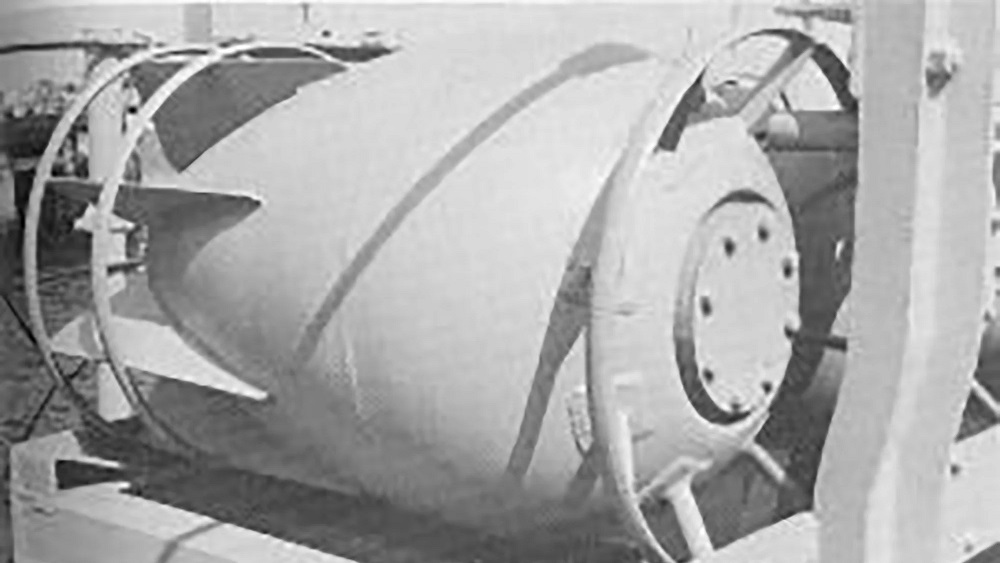
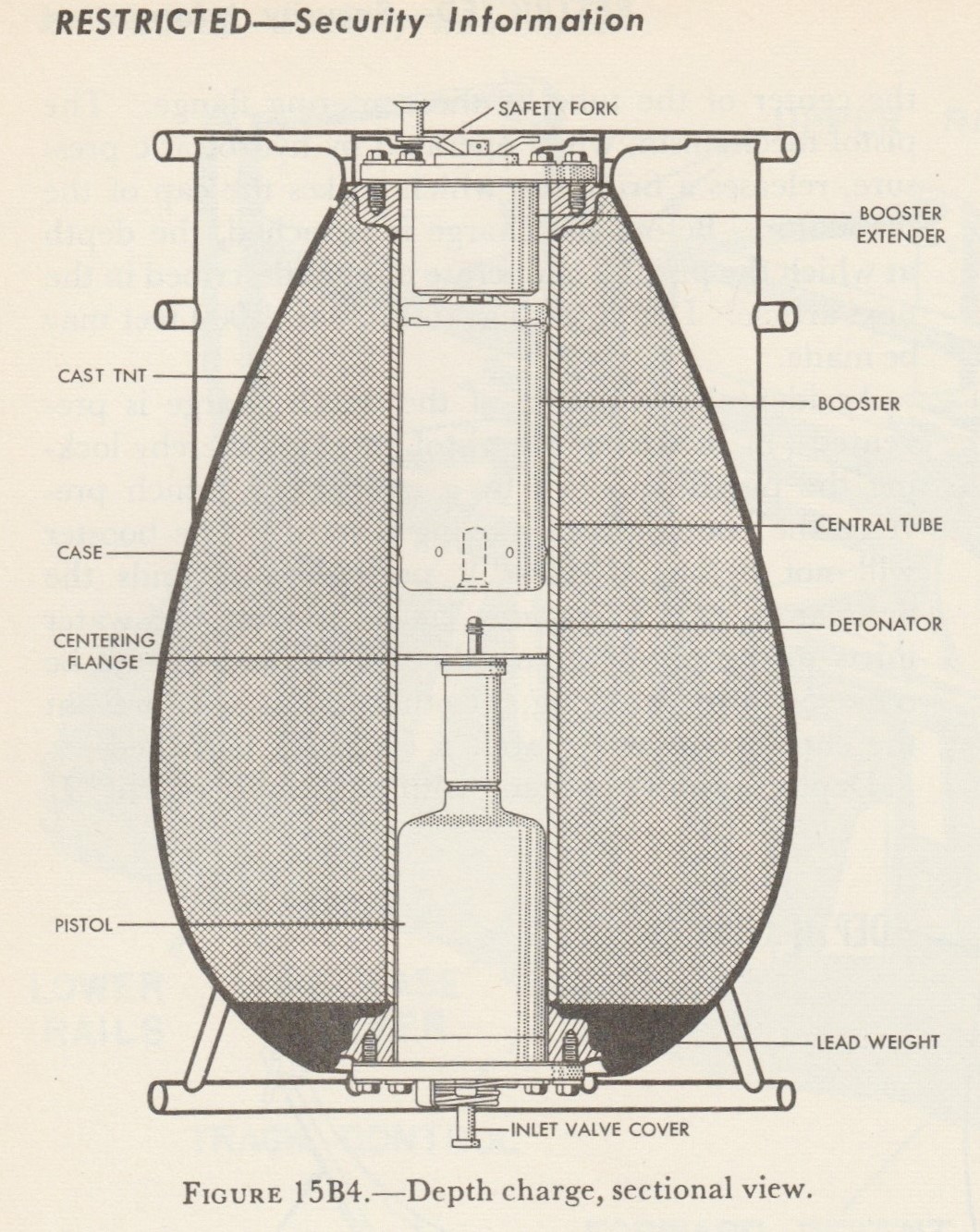
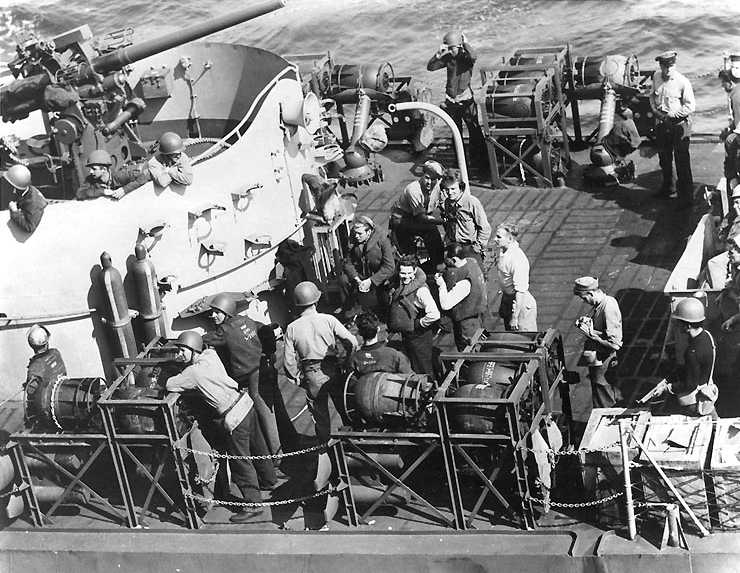
| Date Of Design | 1942 |
|---|---|
| Date In Service | 1944 |
| Total Weight | 29 lbs. (13.2 kg) |
| Explosive Charge | 25 lbs. (11.3 kg) Torpex |
| Sink Rate / Terminal Velocity | 4.5 fps (1.4 mps) |
| Settings | 25, 50, 75 or 100 feet (7.6, 15.2, 22.8 or 30.4 m) |
Intended for use against frogmen and midget submarines. Issued in limited numbers.
| Date Of Design | N/A |
|---|---|
| Date In Service | Not in service |
| Total Weight | 480 lbs. (218 kg) |
| Explosive Charge | 230 lbs. (104 kg) Torpex |
| Sink Rate / Terminal Velocity | 35 fps (10.7 mps) |
| Settings | N/A |
A "teardrop" magnetic-fuzed DC. Probably not in service.
A fast-sinking, torpedo-shaped DC meant to be used in tandem with the Mark 11. Had a 45 lbs. (20 kg) charge and was contact-fuzed. May not have entered service prior to the end of the war.
| Date Of Design | 1943 |
|---|---|
| Date In Service | 1945 |
| Total Weight | 340 lbs. (154 kg) |
| Explosive Charge | 200 lbs. (91 kg) Torpex |
| Sink Rate / Terminal Velocity | 23 fps (7.0 mps) |
| Settings | N/A |
An acoustic DC with an RCA Doppler pistol. Apparently more effective than the magnetic Mark 8. Teardrop shape with a stable under-water trajectory. Finished too late for use during World War II.
| Date Of Design | 1944 |
|---|---|
| Date In Service | 1946 |
| Total Weight | 435 lbs. (197 kg) |
| Explosive Charge | 295 lbs. (134 kg) Torpex |
| Sink Rate / Terminal Velocity | 31 fps (9.4 mps) |
| Settings | 2,500 feet (762 m) |
Postwar DC for projector use, only. Mod 0 was hydrostatic, Mod 1 was acoustic. Last DC developed for the USN.
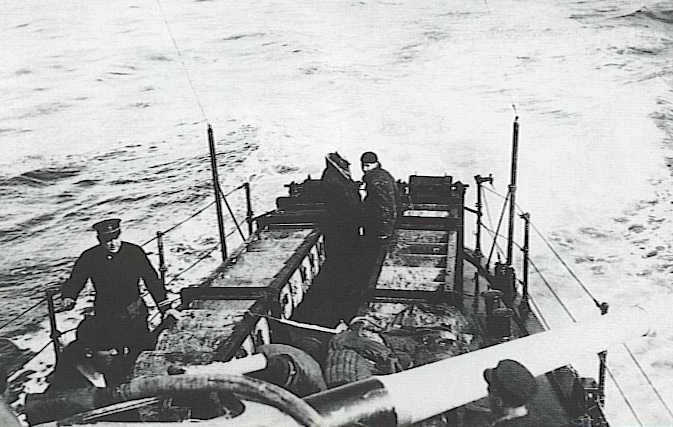
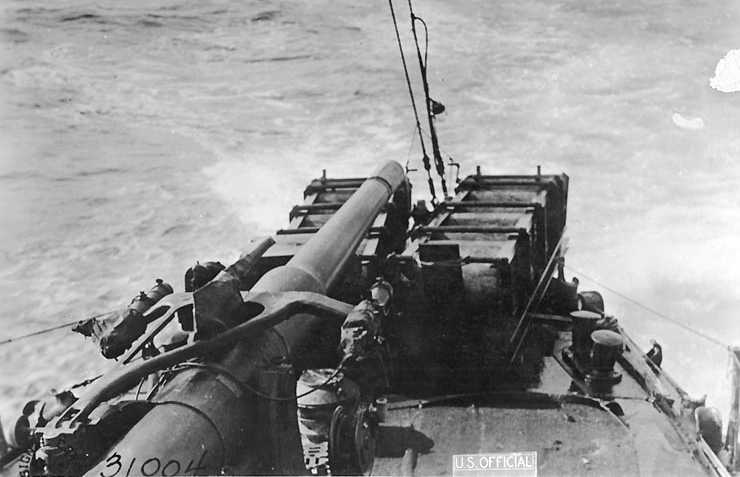
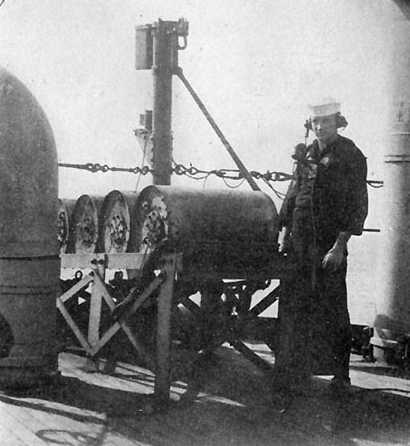
Designed in 1918 with deliveries starting in April. This rack held eight DC, but many World War I destroyers had five-charge extensions for a total of thirteen. Usually fitted in pairs. These racks allowed timed, spaced DC drops and could be controlled either from the bridge or at the rack. Weighed about 1 ton (1.1 mt). Installed on some 250 American, British and French destroyers by the time of the Armistice.
Lighter weight rack holding five depth charges. Intended for smaller ships. World War I ended before these were placed in production.
Cut down from the original Mark 1 Mod 0 to hold five Mark 6 or three Mark 7 Depth Charges and used on new destroyers built in the 1930s.
The first rack design capable of holding the new depth charges developed during World War II. This one could hold eight 300 lbs. (136 kg) type DC.
Similar to Mark 3 but intended for smaller ships. Could hold seven 300 lbs. (136 kg) type DC.
Similar to Mark 3 but intended for smaller ships. Could hold five 300 lbs. ( 136 kg) type DC.
In 1917 the USN rejected the British Thornycroft DC thrower as being over-engineered and too difficult to mass produced. At the same time, the USN was experimenting with the Davis non-recoiling AA gun. Lt. Cmdr. A.J. Stone, USNRF, proposed using this technique to launch depth charges. The result was the "Y" gun which fired two DC simultaneously, one to either side. Work began in 1917 at Stone's former employer, the General Ordnance Company in Groton, Connecticut, prior to receipt of a formal order on 8 December 1917. The first projector was delivered two days later. This became standard equipment during World War I on many destroyers and sub-chasers, with 974 being produced.
These projectors used a 3" (7.62 cm) blank cartridge to fire the arbors (depth charge holders). The arbors were inserted into each arm of the projector and then the depth charges were placed onto the arbors. After the gun was fired, the arbors fell into the sea separately from the depth charges. The charge could be varied to provide ranges of 50, 66 or 80 yards (46, 60 or 73 m).
The Y-gun projectors took up precious centerline space and could not be quickly reloaded following an attack. Destroyers carried at most two, but more usually one, projector. Marks 5 and 7 were modified versions of the Mark 1 and the Mark 8 was not in service.
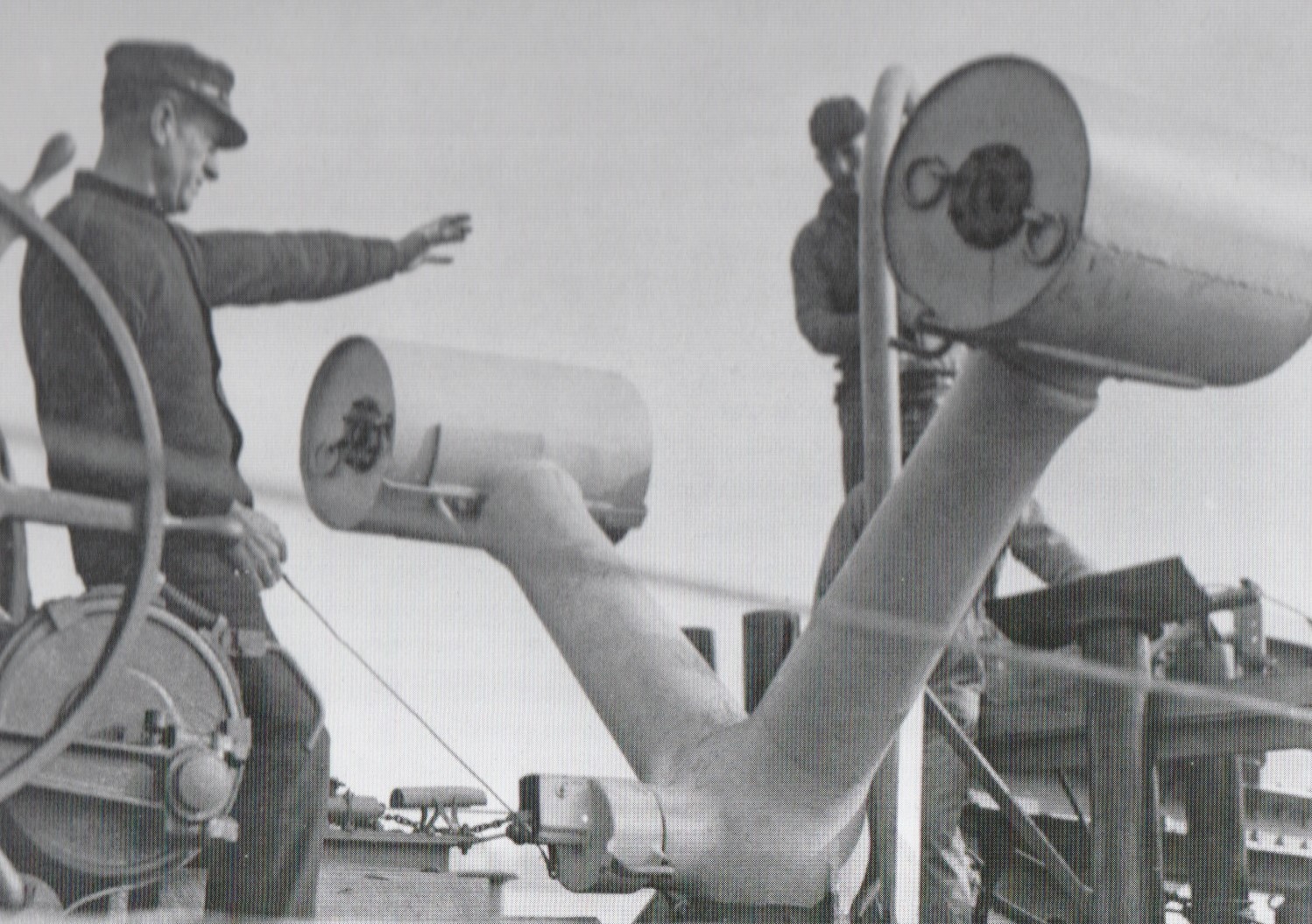
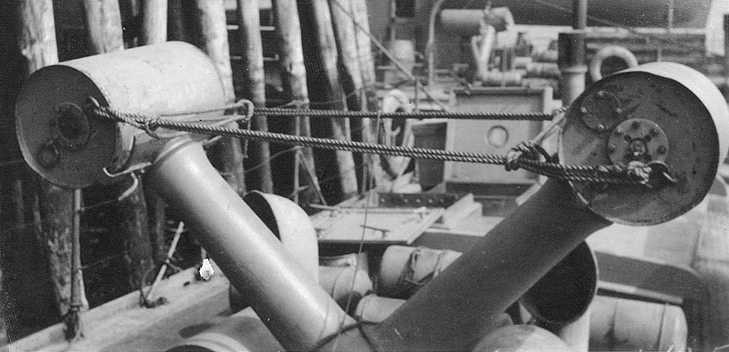
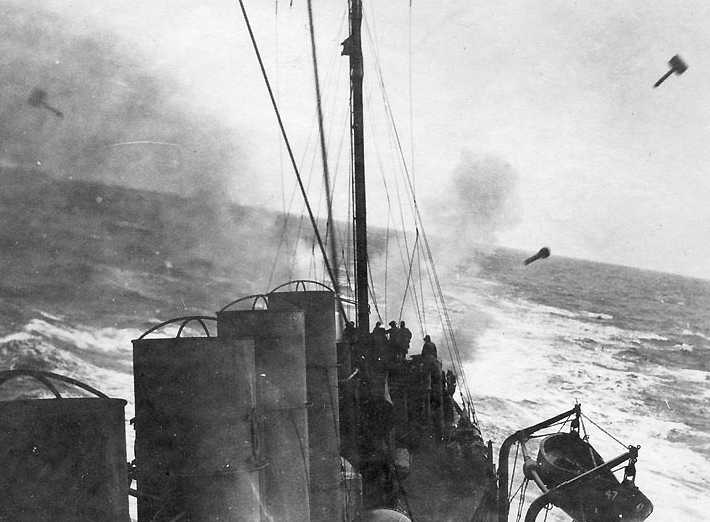
Single DC mortar used during World War I. Formerly designated as the 6" (15.2 cm) Mark 13.
Known as the "K-gun" as it resembled the letter "K", the Projector Mark 6 was introduced in 1941 just in time for World War II. Fired a single Mark 6, 9 or 14 depth charge to ranges of 60 to 150 yards (55 to 137 m) with a flight time of 3.4 to 5.1 seconds. Since the Mark 6 did not need to be sited on the centerline, many more could be used on each ship. Typically, four to six were mounted on destroyers while destroyer escorts carried eight. Still used up to the 1950s in the USN. A number of K-guns were supplied to Britain and other Allies as part of Lend-Lease. Arbors had a moveable stop whose position was changed when used with a British Depth Charge Mark 7 Heavy.
Like the Y-gun, this projector required an arbor (holder) which had to be inserted into the projector before the depth charge could be loaded and which fell into the sea separately from the depth charge. Arbors consisted of a tubular stem 24 inches long by 6 inches in diameter (61 cm x 15 cm), closed on one end and with a 12 by 31 inch (30.5 x 79 cm) tray welded to the open end. The stem fits into the projector barrel and acts as a projectile when fired. The arbor weights were: Mark 6, 70 lbs. (32 kg); Mark 7 and Mark 7 Mod 1, 65 lbs. (29.5 kg).
The propellant was black powder in a 3" (7.62 cm) casing and was supplied in three loads for ranges of 60, 90 and 150 yards (55, 82 and 137 m).
The Depth Charge Projector Mark 9 was a revised version of the K-gun with a built-in arbor that was tested in 1944 on the frigate USS Asheville (PF-1). The weight savings proved trivial and the project was abandoned.
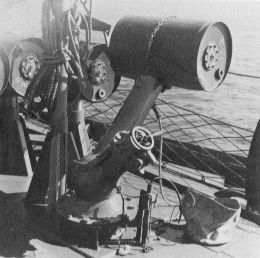
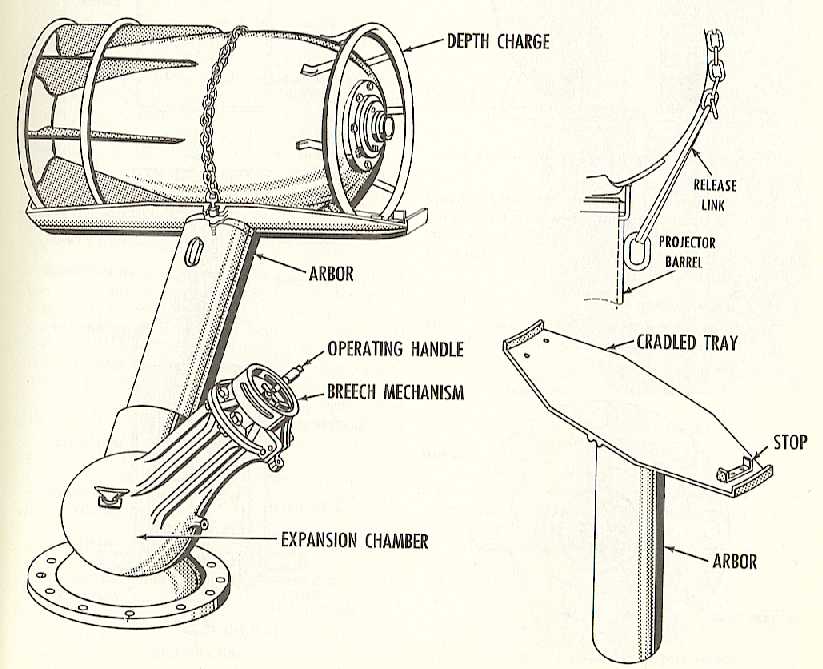
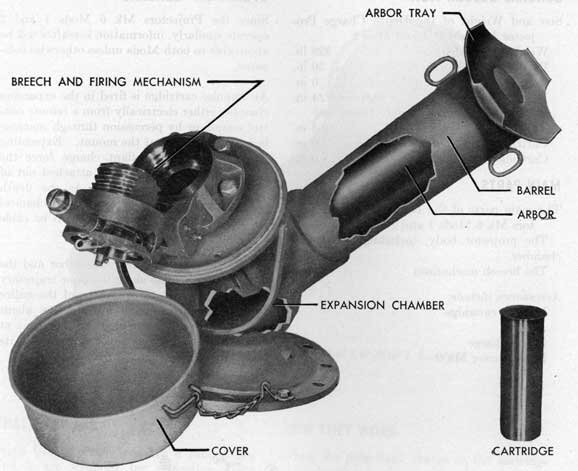
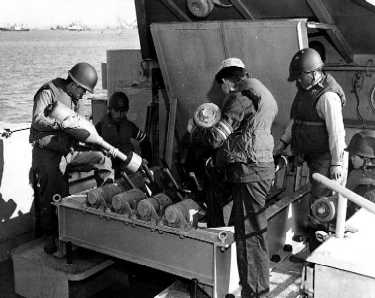
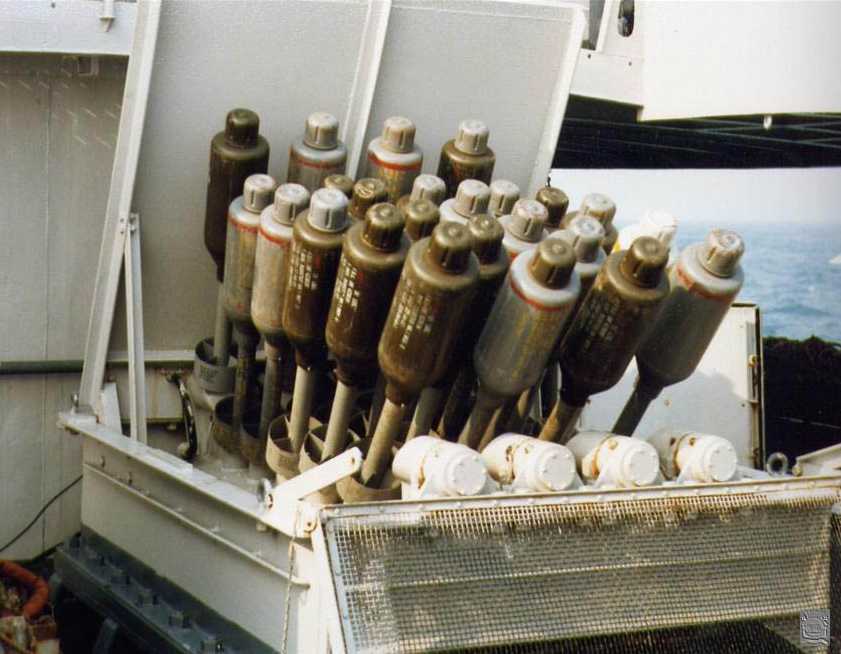
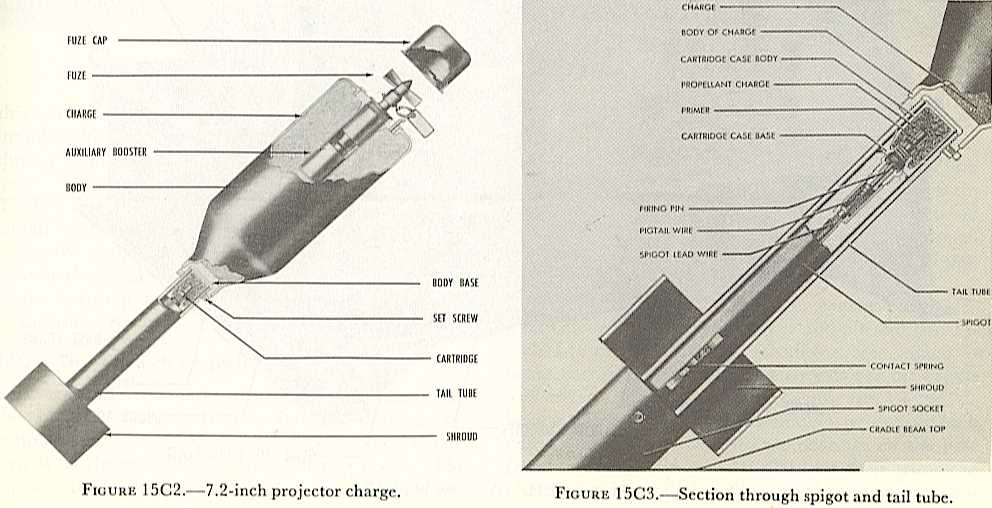
First USN Hedgehog projectors, adapted from the British 24-spigot mortar. More popular and more successful with the USN than with the Royal Navy, possibly because of better sonar detection practices. Production in the USA began in late 1942 and differed from the British design in being both more rugged and more flexible in operation. A target designation transmitter and gun train indicator, both based upon the British models, provided a greater measure of control than was available with conventional depth charges.
Projectiles were 7.2 inches (18.3 cm) in diameter and weighed 65 lbs. (29.5 kg) with an explosive charge of 35 lbs. (15.9 kg) of Torpex. Sinking speed was 22 to 23.5 fps (6.7 to 7.2 mps). Mark 10 fired an elliptical pattern 195 feet (59 m) in width and 168 feet (51 m) long at a range of 283 yards (259 m). The Mark 11 fired a circular pattern 267 yards (244 m) wide at a range of 267 yards (244 m) from the firing ship. Could be trained up to 25 degrees by tilting the firing platform. Total weight for a dual installation and six reloads was 28,720 lbs. (13,027 kg).
Missiles were fired in pairs with an interval of either 0.1 or 0.2 seconds between pairs. The order was such that the missiles with the highest trajectories were fired first while those with the flattest trajectories were fired last. This allowed all missiles to hit the water at about the same time. Reload time was 3 minutes. When aimed to impact at 200 yards (180 m) from the firing ship, it took about 17 seconds from the time the missiles were fired until they sank to a depth of 200 feet (61 m) and 34 seconds to reach a depth of 600 feet (183 m).
Some of the advantages of this weapon were that:
- They only exploded if they hit something, which meant that the firing ship could more quickly make follow-on attacks if the previous attack was unsuccessful.
- Since unsuccessful attacks did not disturb the water, ASDIC/Sonar performance was not affected.
- The projectiles had a higher sinking rate than conventional depth charges which again sped up the time that it took to make follow-on attacks.
The principle disadvantage of Hedgehog was its 40 ton recoil force, which precluded it being used on small warships. This led to the development of Mousetrap, as described below.
It should be noted that the USN considered that the Hedgehog projectiles to be missiles, not rockets, as the propelling charge was entirely used up prior to the projectile leaving the spigot. Propellant was NC in USN service.
Mortar-type flare projector, introduced in 1946. Fired a 2.4 x 36 inch (7 x 91 cm) flare rocket.
Interim trainable Hedgehog projector. Basically, a Mark 11 projector mated to a twin 40 mm Bofors gun mount. Developed in 1946, it led to the much better Mark 15.
Standard post-World War II trainable Hedgehog mount. Was stabilized and power-trained by a remote fire control system. Very widely used. Total weight was 17,425 lbs. (7,904 kg), all topside. Weight was 26,795 lbs. (12,154 kg) with the standard allowance of six patterns. Required a crew of eight to operate and took five minutes to reload. The typical pattern was a 280 foot circle (85 m) with a blind time of 10.4 seconds in flight and 18.6 seconds to sink to 200 feet (61 m).
Proposed Hedgehog on a 5"/38 mounting that was almost adopted for the Dealey class (DE-1006) destroyer escorts in 1951. Would have fired 61 rounds.
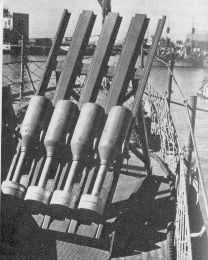
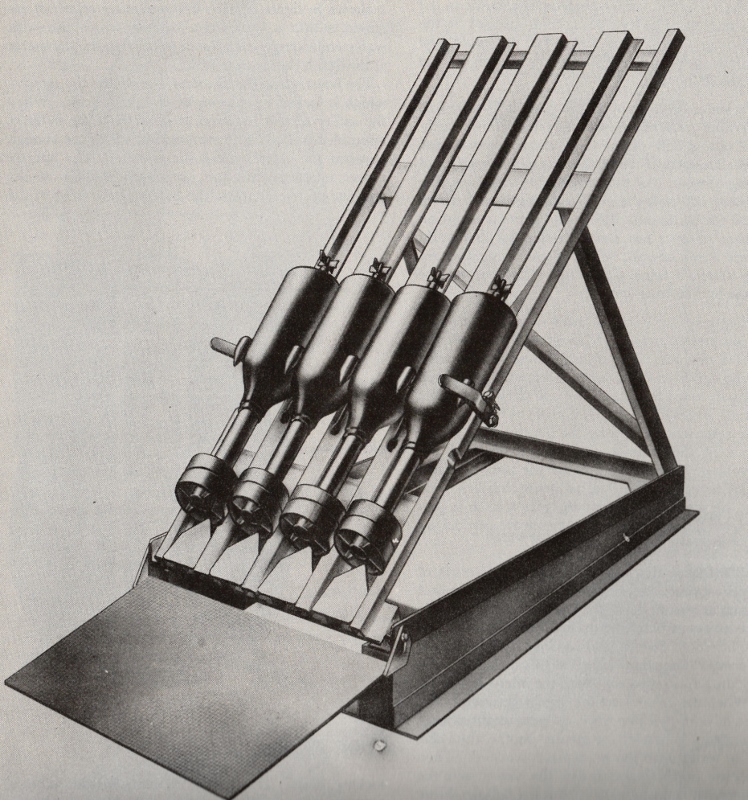
Mousetrap rocket projector with four rails. This weapon was originally classified as a Rocket Launcher and retained its original Mark number when reclassified as an ASW projector. This weapon was developed to take the place of Hedgehog for smaller ships such as patrol craft which could not withstand the recoil forces generated by that weapon.
An 85 lbs. (39 kg) projectile was originally used, but this was too heavy to man-handle in rough seas. The warhead was changed to the lighter one of the Hedgehog (see above), which had the added benefit of simplifying logistics.
The mountings were usually fitted in pairs and could not be compensated for rolling. Launcher had a fixed elevation of 48 degrees. Not considered to be as effective as Hedgehog, but did give those smaller ships an ahead-firing weapon.
Projectiles were 7.2 inches (18.3 cm) in diameter and weighed 65 lbs. (29.5 kg) with an explosive charge of 31 lbs. (14.1 kg) of TNT. Torpex warheads added about 2.5 lbs. (1.1 kg) to the overall weight. Total length was 38.6 inches (98 cm). Unlike the Hedgehog missile projectiles, this projectile was classified by the USN as a rocket as it uses a sustainer propellant that burned for 0.2 to 0.7 seconds.
A Mousetrap projector similar to the Mark 20, but with eight rails, organized as four over four. Fired a pattern of about 80 yards wide (73 m) at a range of about 300 yards (274 m). 100 of these weapons were in service by November 1942. In addition to smaller craft, twelve Benson (DD-421) class and Gleaves (DD-423) class destroyers were each fitted with three of these projectors on the forecastle forward of the first 5"/38 (12.7 cm) mount. One of these destroyers, USS Turner DD-648, blew up and sank off Ambrose Light (Lower New York Bay) on 3 January 1944, killing 138 crewmen. The loss was attributed to Mousetrap projectiles with faulty contact fuzes.
British ASW weapon. See British ASW section for details. In the USN, this weapon was fitted the frigate USS Asheville PF-1 in 1944 and to the destroyer escort USS Dealey DE-1006 in 1954. Both evaluations determined that Squid was not much, if any, better than Hedgehog and so it was not fitted to other USN warships.
Originally known as Weapon Able, this was later known as Weapon Alfa or Alpha. The original Mark 108 launcher was based on the twin 40 mm Bofors gun mount and weighed 22,760 lbs. (10,324 kg). The later, purpose-built mounting had a weight of 25,240 lbs. (11,450 kg). Total weight of the latter mounting with 72 rounds was 85,000 lbs. (38,560 kg). Weapon Alfa could fire 12 rounds per minute and held 22 rounds in a ready-service ring. Train rate was 30 degrees per second, maximum elevation was 85 degrees. To reload, the launcher was elevated to 90 degrees and the rockets then loaded from below. Rockets entered the water at 1,300 fps (396 mps). Fuzing was magnetic influence type.
| Description | 12.75-in (32.39 cm) Underwater Rocket Mark 1 | 12.75-in (32.39 cm) Underwater Rocket Mark 2 |
|---|---|---|
| Minimum - Maximum range | 300 - 760 yards (274 - 695 m) | 250 - 975 yards (229 - 892 m) |
| Flight Time | 10.9 seconds | 14.2 seconds |
| Blind time to a depth of 200 feet (61 m) at max range | 26.5 seconds | 33.1 seconds |
| Weight | 525 lbs. (238 kg) | 525 lbs. (238 kg) |
| Length | 102.5 in (2.60 m) | 102.5 in (2.60 m) |
| Body Diameter | 12.75 in (320 cm) | 12.75 in (320 cm) |
| Sink rate | 38 fps. (11.6 mps) | 38 fps. (11.6 mps) |
| Warhead | 250 lbs. (113 kg) TNT or Torpex | 250 lbs. (113 kg) TNT or Torpex |
In 1963 these rockets were designated as RUR-4A Mark 1 and RUR-4A Mark 2.
Video of Weapon Alpha / RUR-4A on YouTube.
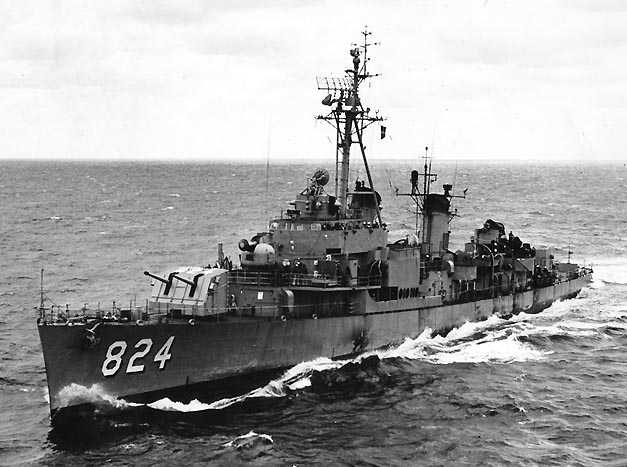
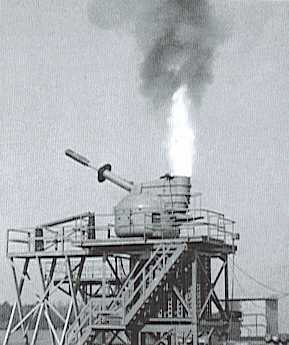
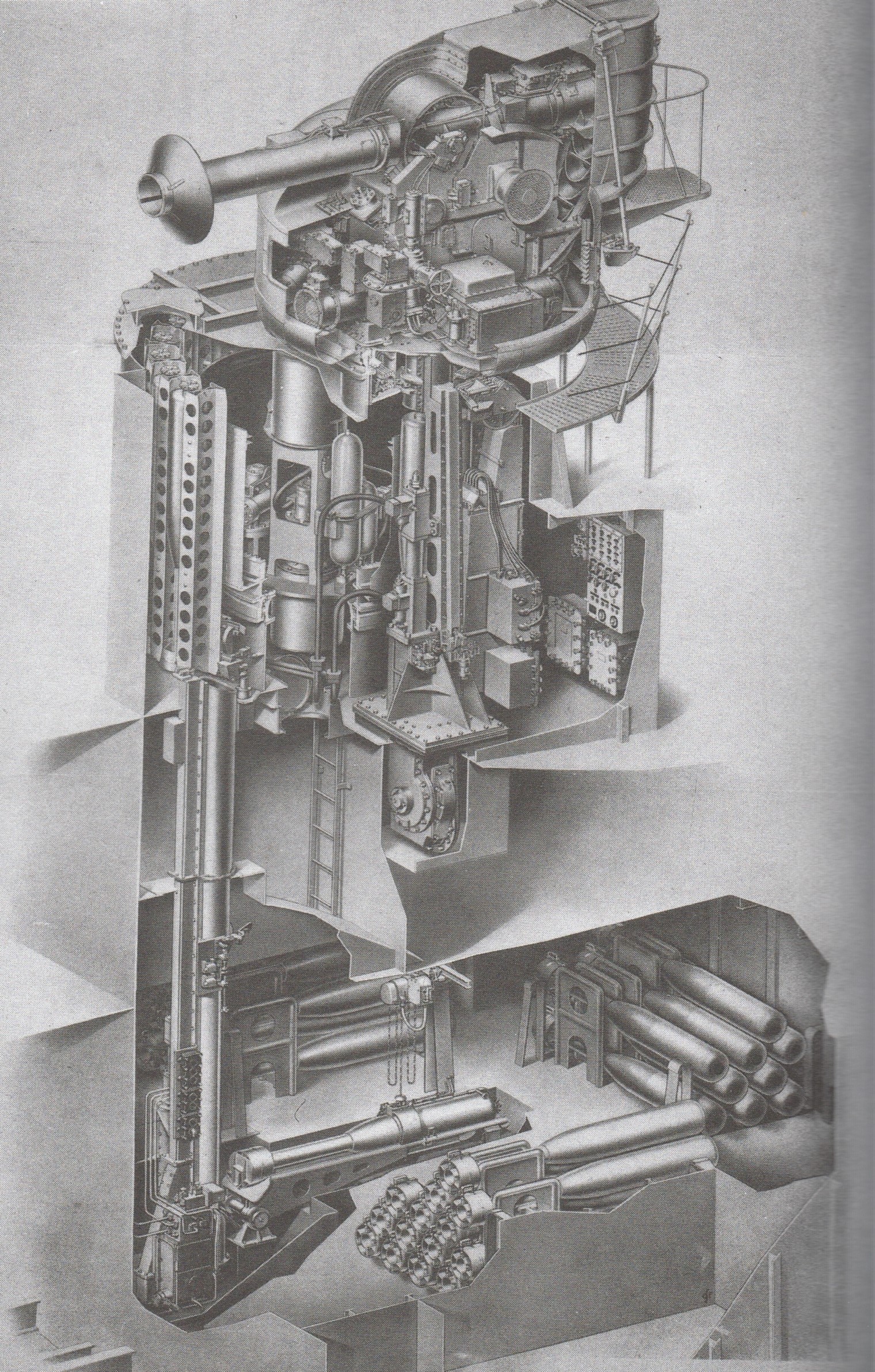
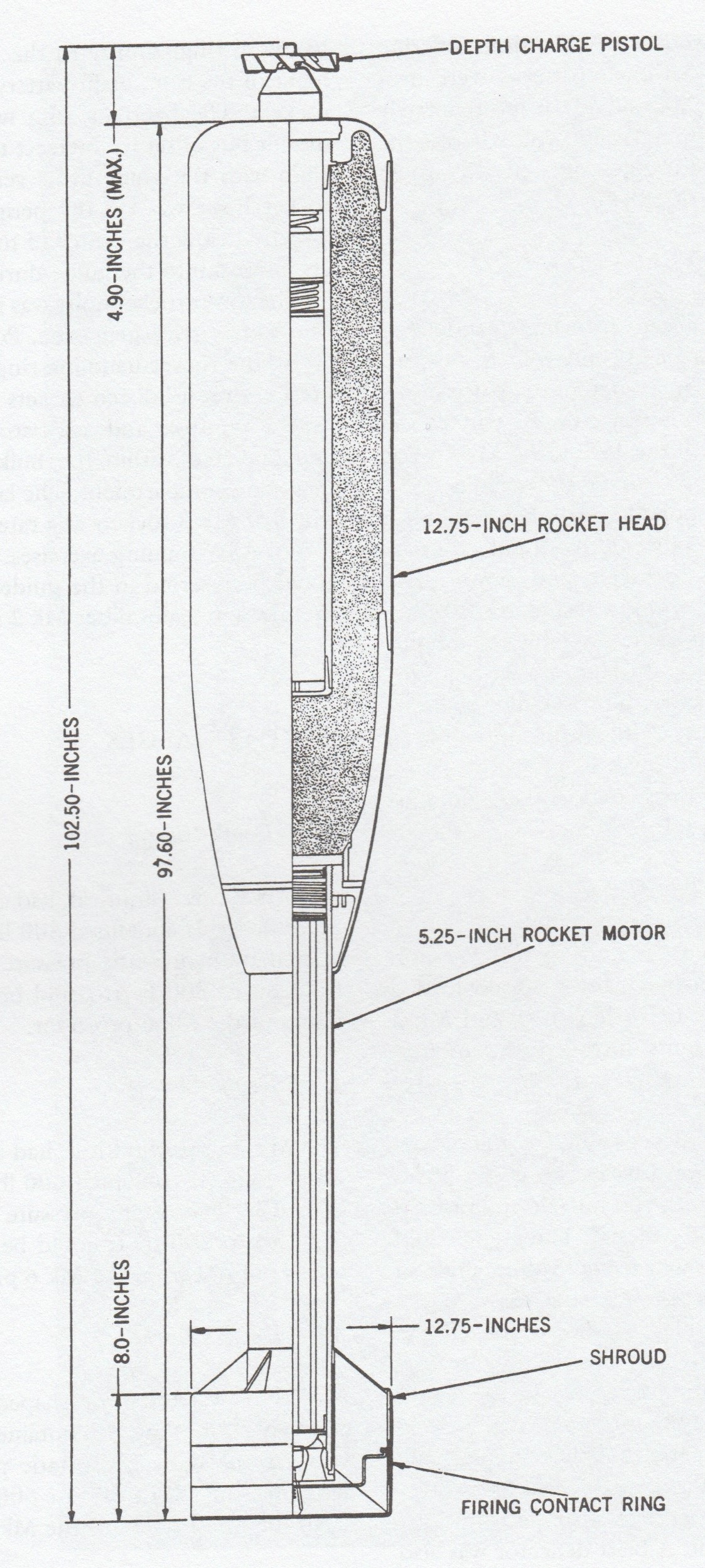
Rocket Assisted Torpedo (RAT) was the first long-range, ship-launched ASW torpedo system to enter service in the USN. Installed in pairs on twin 5"/38 (12.7 cm) gun-houses, one on each side. There was to have been an alternative version for ships that did not have 5" (12.7 cm) gun-houses but this was dropped from development. Originally, each missile carried a Mark 43 Mod 4 acoustic-homing torpedo which had a maximum speed of 15 knots but this was later replaced with the Mark 43 Mod 3 which had a speed of 21 knots. Maximum range was 5,000 yards (4,572 m). The RAT launchers were installed only on USS De Haven (DD-727) and USS Sarsfield (DD-837). Each launcher could hold five missiles, one on the launch rail and four in an adjacent ready-use magazine. RAT was superseded by the longer ranged ASROC.
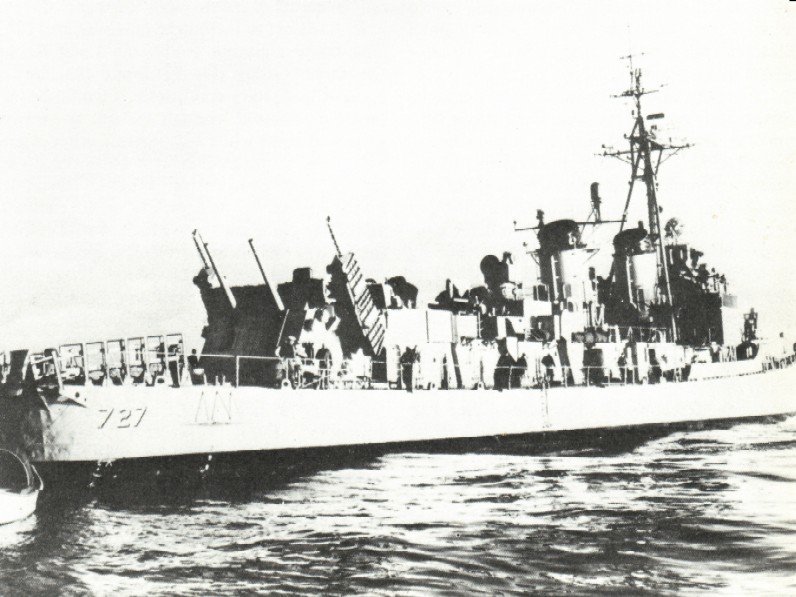
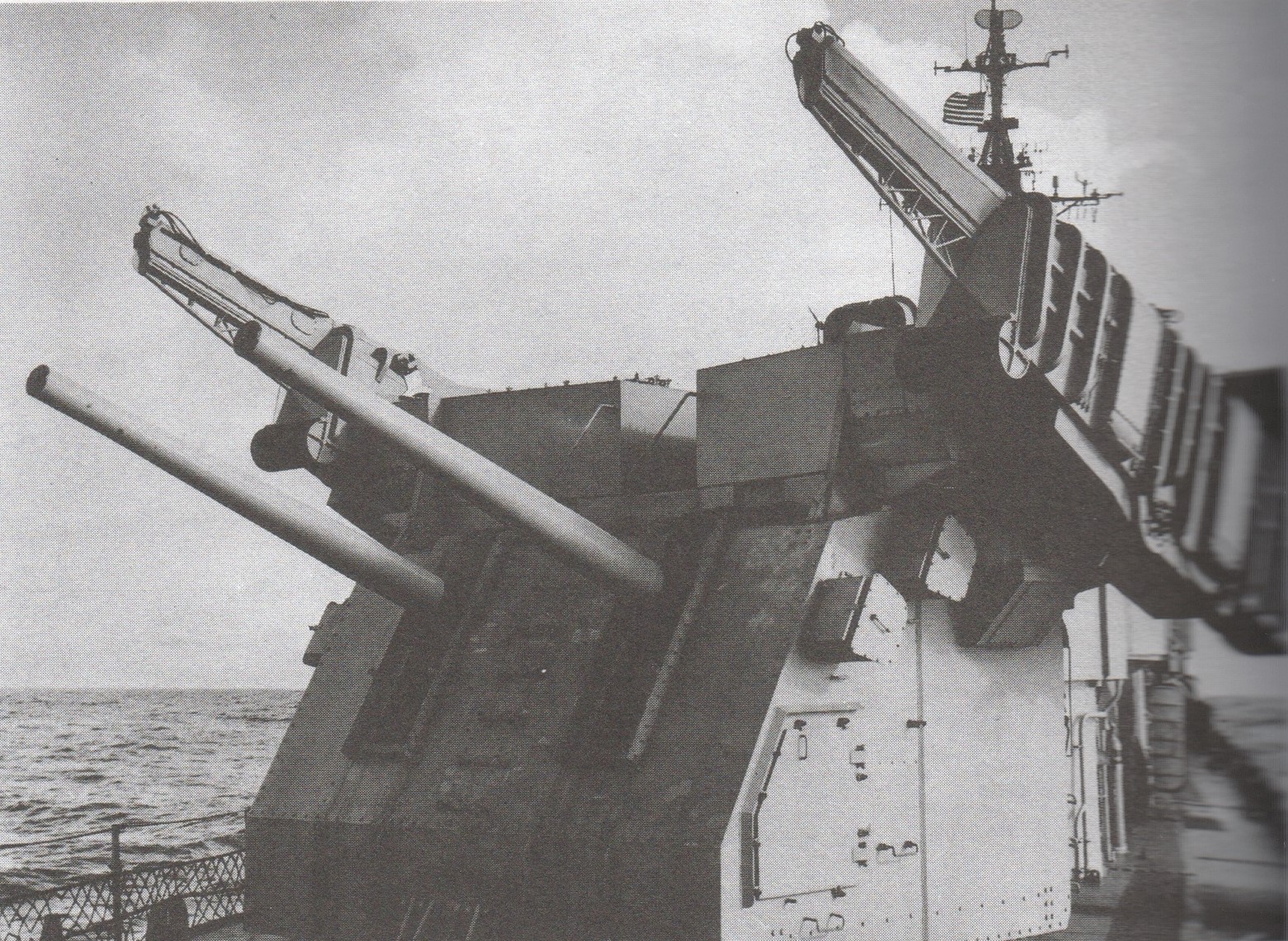
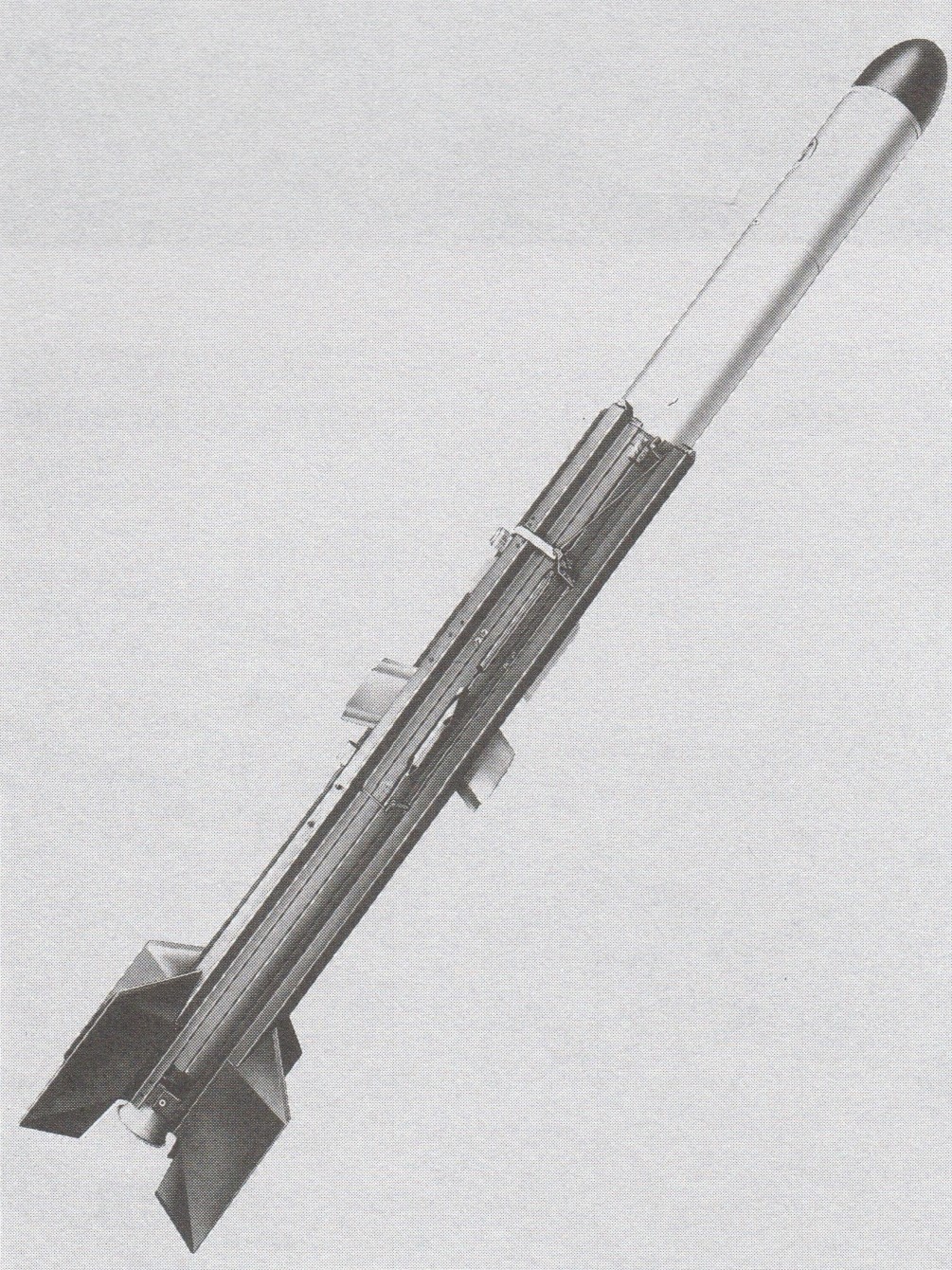
"Naval Weapons of World War Two" by John Campbell
"US Naval Weapons" and "The Naval Institute Guide to Naval Weapon Systems 1991/92" both by Norman Friedman
"Find and Destroy: Antisubmarine Warfare in World War I" by Dwight R. Messimer
"Sumner-Gearing-Class Destroyers" by Robert F. Sumrall
---
"Navy Ordnance Activities: World War 1917-1918" by Bureau of Ordnance, US Navy
"Depth Charge Projector Mark 6, Mod 1 and Mod 2 - OP 831" by Bureau of Ordnance, US Navy - On-line version at San Francisco Maritime National Park Association
"Depth Charge, Mark 9 and Modifications - OP 866" by Bureau of Ordnance, US Navy - On-line version at San Francisco Maritime National Park Association
"U.S. Navy Bureau of Ordnance in World War II" by Lt. Cmdr. Buford Rowland, USNR, and Lt. William B. Boyd, USNR
"Naval Ordnance and Gunnery - 1952" Navpers 16116-B
"Bayly's Navy" by Vice Admiral Walter S. Delany USN (Retired) on line at Naval Historical Center
---
Special help from Iwan Bos, Larry Sawh and David Perry
12 August 2008 - Benchmark
18 May 2013 - Corrected typographical error
27 May 2014 - Added link to Britain ASW datapage
14 March 2015 - Additional data for Hedgehog and Mousetrap projectiles
15 February 2018 - Converted to HTML 5 format, added to description of Mark 1 depth charge
11 June 2022 - Added information for Mark 9 depth charge
13 February 2023 - Added information for Mark 6 DCT
12 July 2023 - Corrected formatting problem
13 August 2023 - Added information and photographs of Weapon Alpha and RAT
24 March 2024 - Added link to video of Weapon Alpha on YouTube

